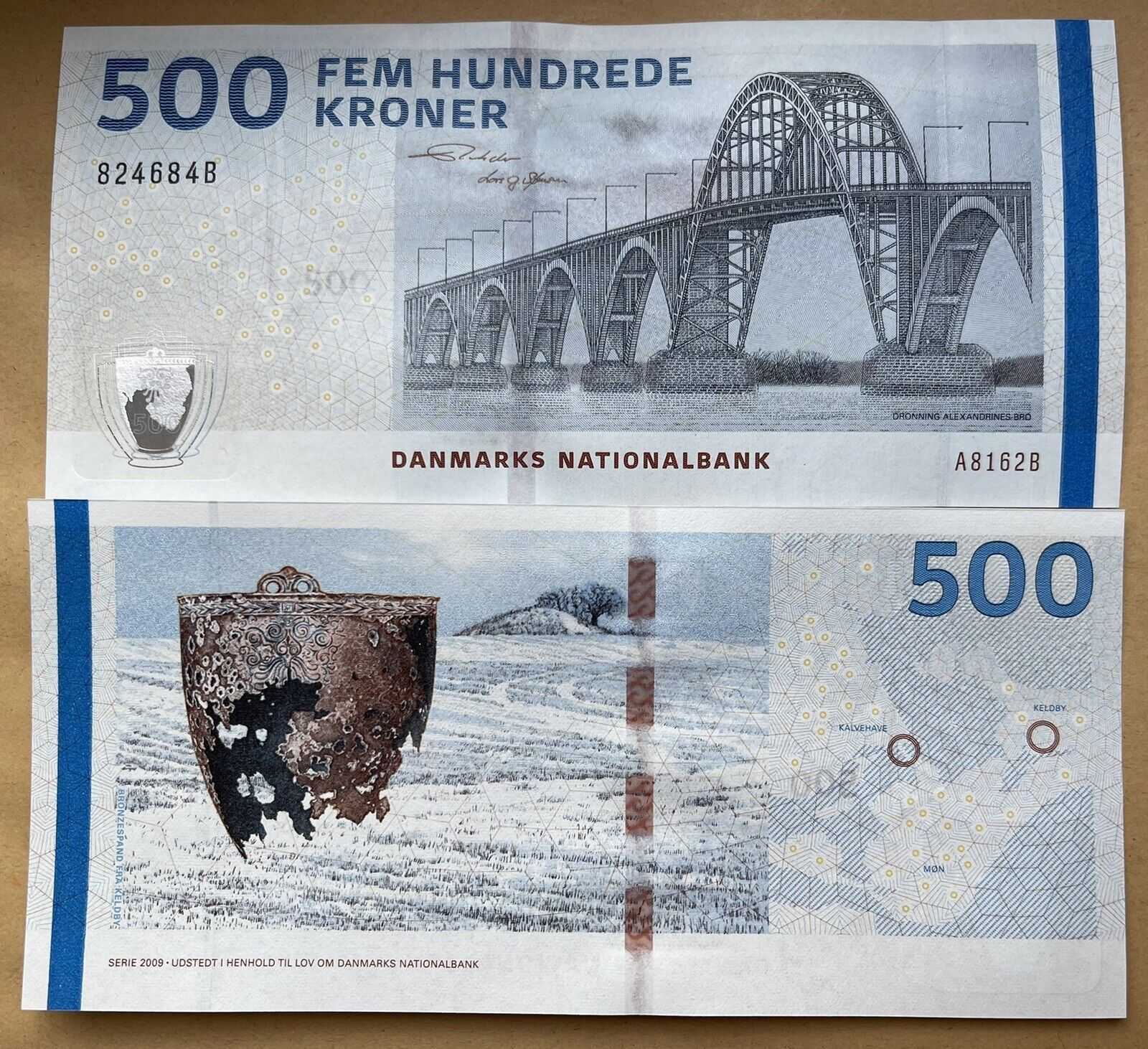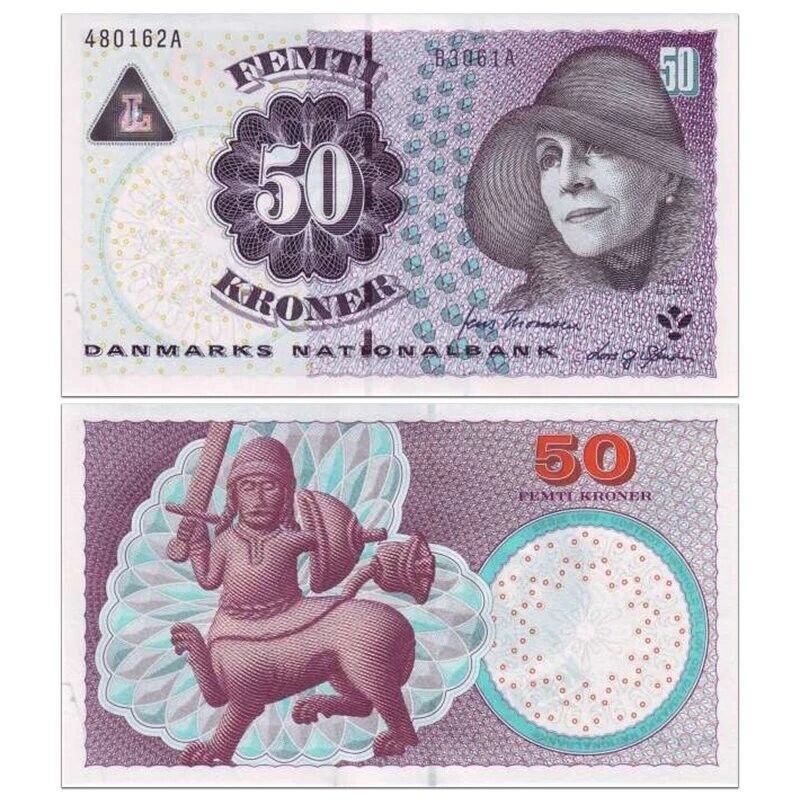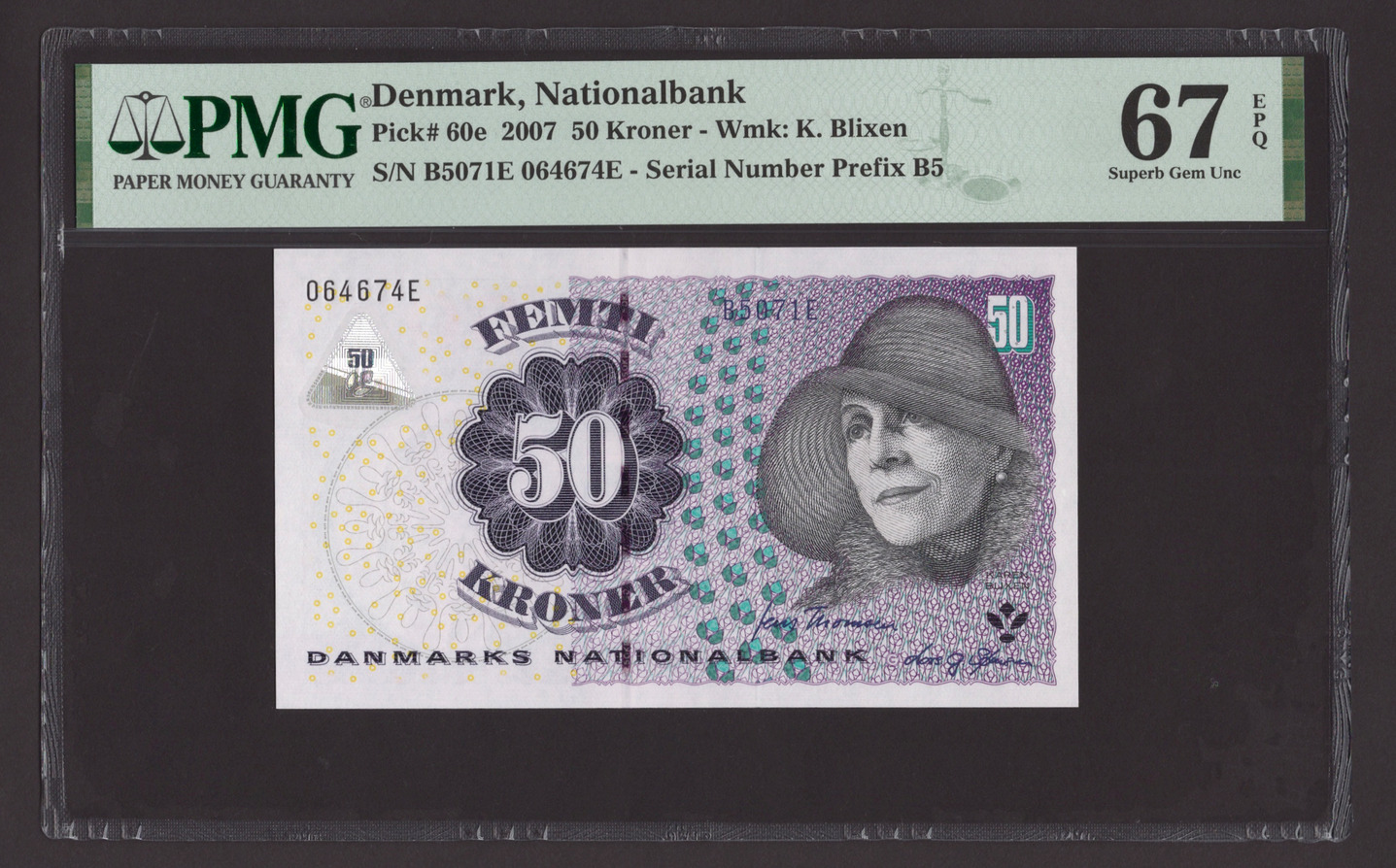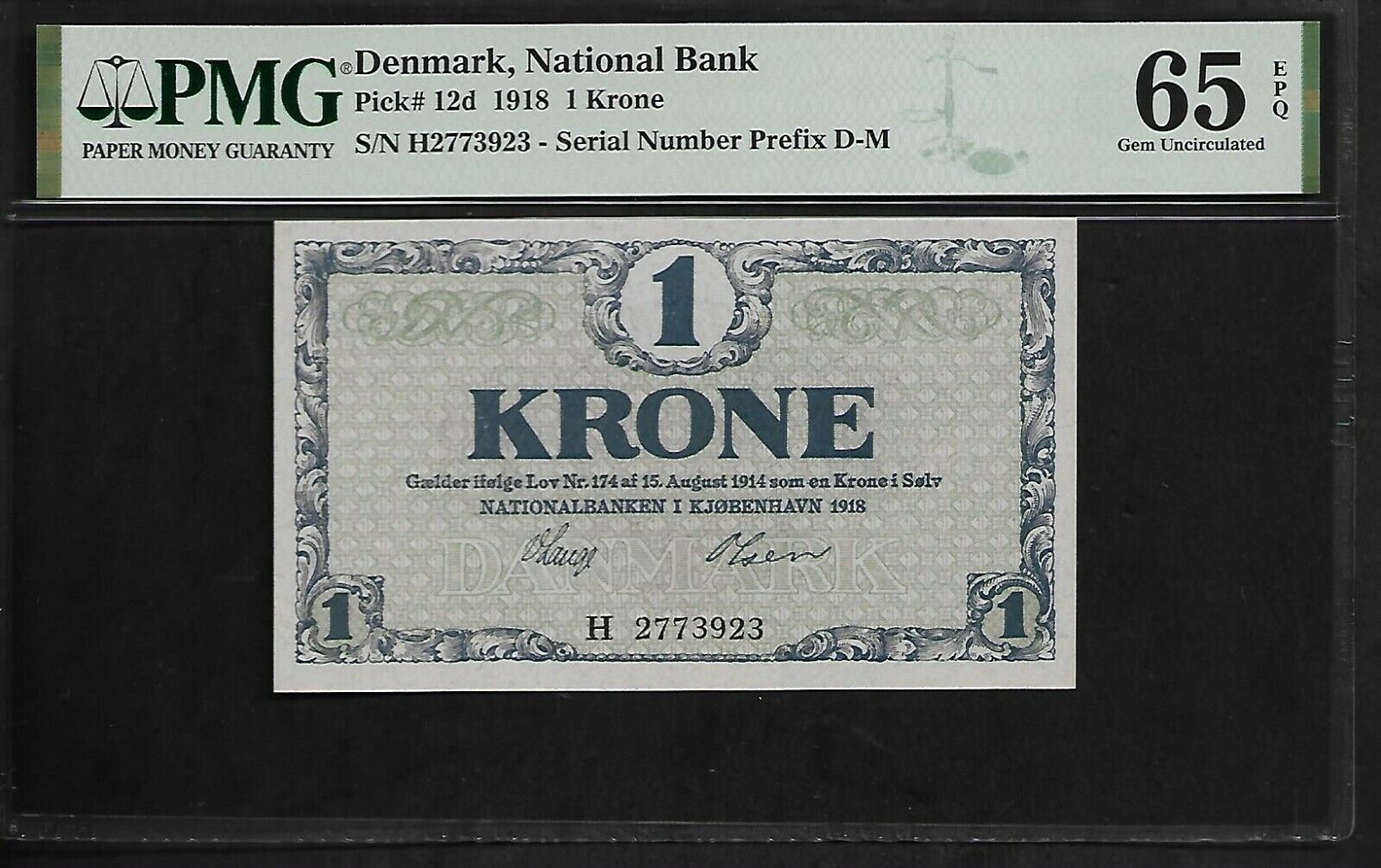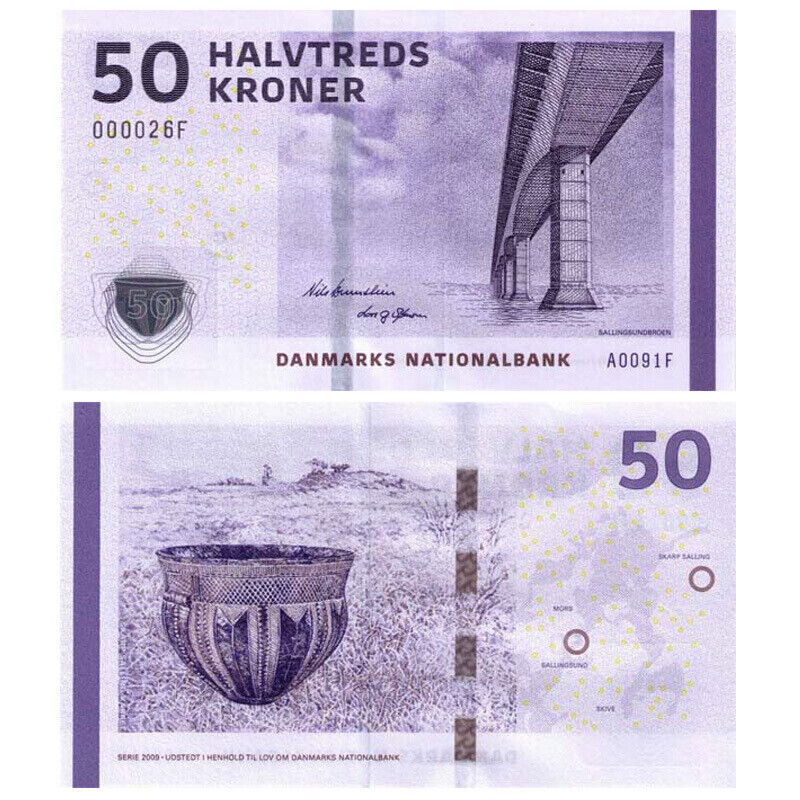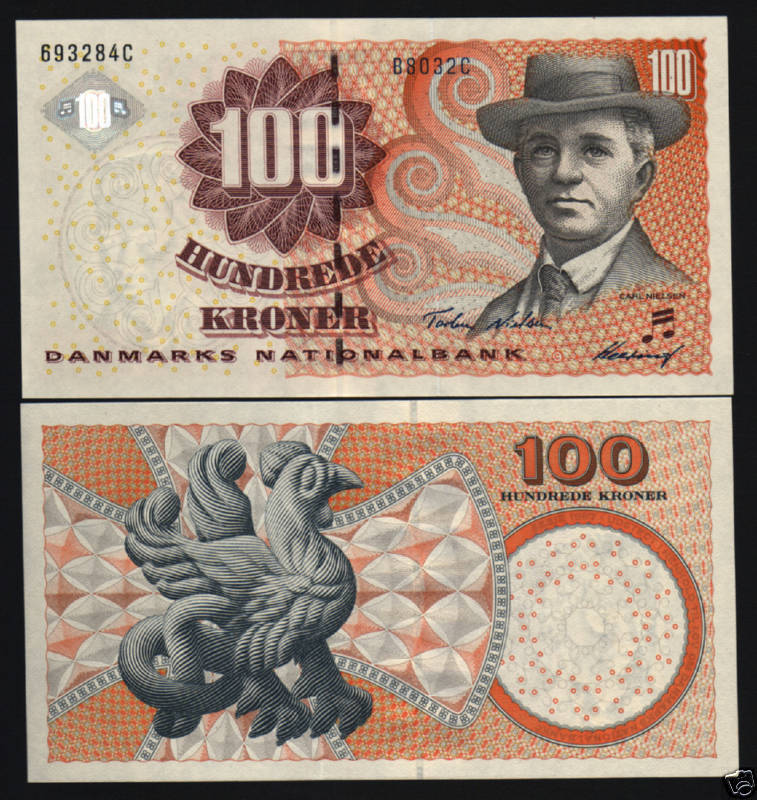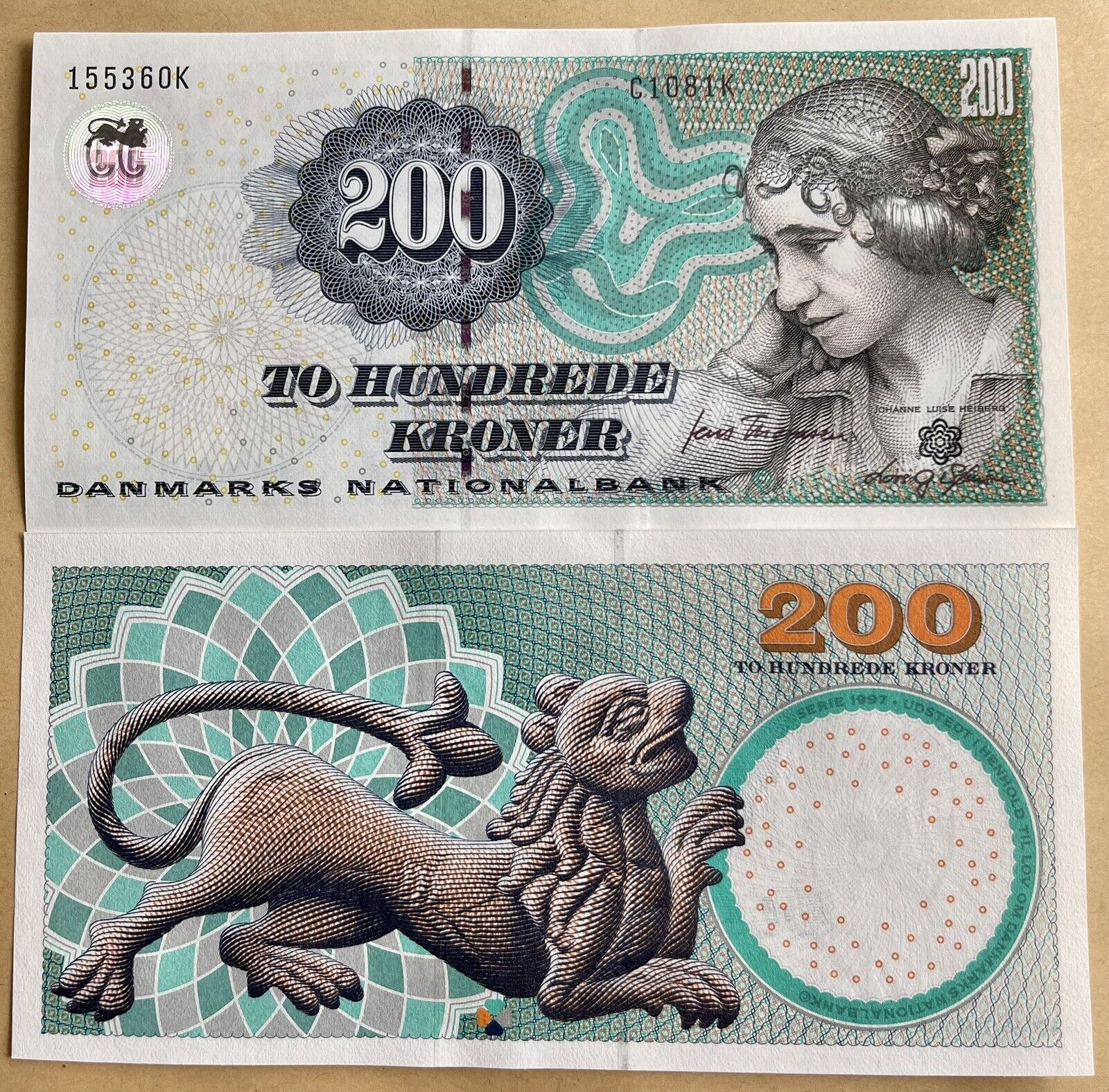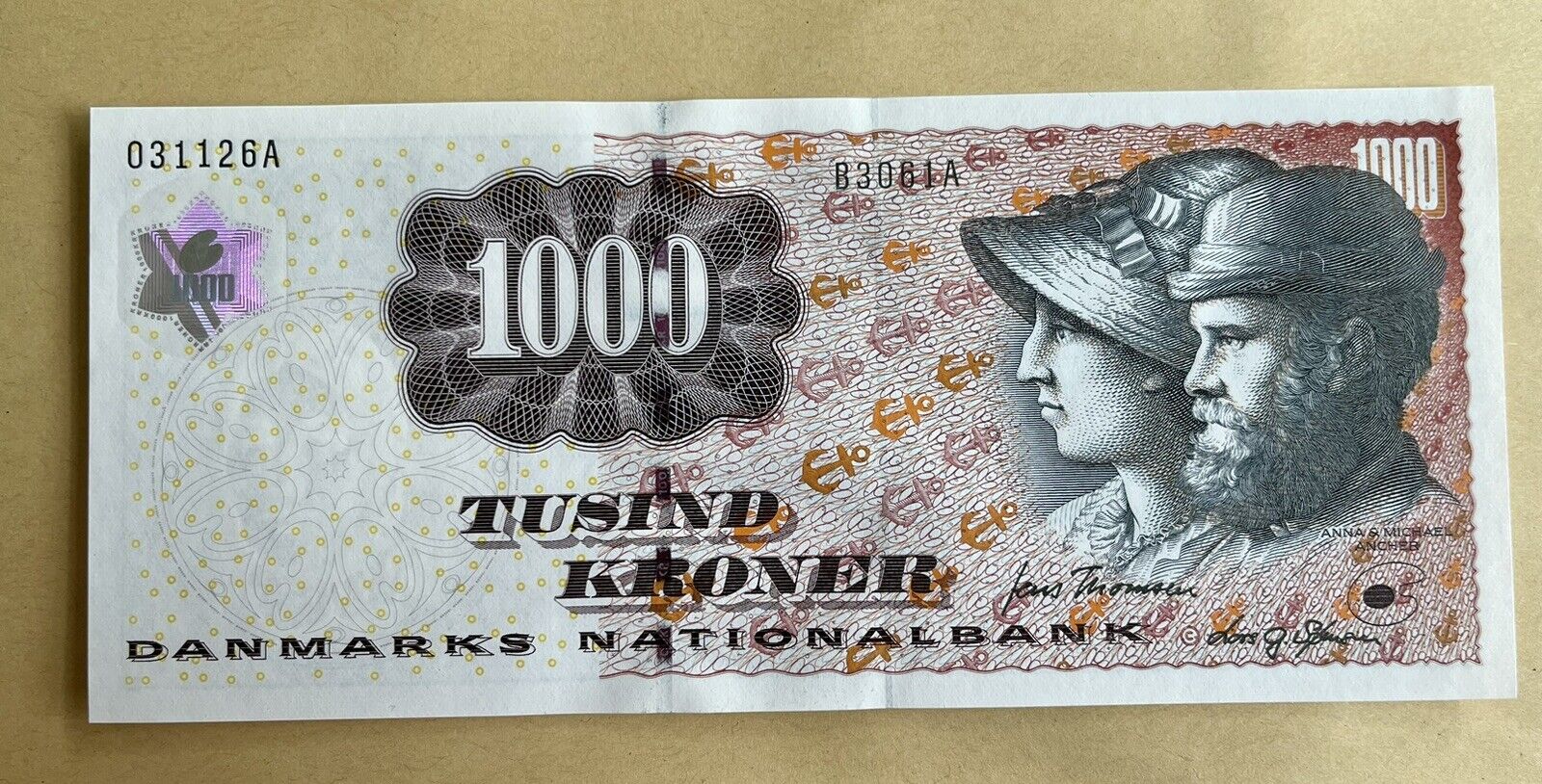-40%
Denmark banknote - 1 en krone - year 1945 - RARE - free shipping
$ 21.12
- Description
- Size Guide
Description
The krone (plural: kroner; sign: kr.; code: DKK) is the official currency of Denmark, Greenland and the Faroe Islands, introduced on 1 January 1875. Both the ISO code "DKK" and currency sign "kr." are in common use; the former precedes the value, the latter in some contexts follows it. The currency is sometimes referred to as the Danish crown in English, since krone literally means crown. Historically, krone coins have been minted in Denmark since the 17th century.One krone is subdivided into 100 øre (Danish pronunciation: [ˈøːɐ]; singular and plural), the name øre possibly deriving from Latin aureus meaning "gold coin". Altogether there are eleven denominations of the krone, with the smallest being the 50 øre coin, which is valued at one half of a krone. Formerly there were more øre coins, but those were discontinued due to inflation.
The krone is pegged to the euro via the ERM II, the European Union's exchange rate mechanism. Adoption of the euro is favoured by the major political parties, however a 2000 referendum on joining the Eurozone was defeated with 53.2% voting to maintain the krone and 46.8% voting to join the Eurozone.
The oldest known Danish coin is a penny (penning) struck ad 825–840, but the earliest systematic minting produced the so-called korsmønter or "cross coins" minted by Harald Bluetooth in the late 10th century. Organised minting in Denmark was introduced on a larger scale by Canute the Great in the 1020s. Lund was the principal minting place and one of Denmark's most important cities in the Middle Ages, but coins were also minted in Roskilde, Slagelse, Odense, Aalborg, Århus, Viborg, Ribe, Ørbæk and Hedeby. For almost 1,000 years, Danish kings – with a few exceptions – have issued coins with their name, monogram and/or portrait. Taxes were sometimes imposed via the coinage, e.g. by the compulsory substitution of coins handed in by new coins handed out with a lower silver content.
Danish coinage was generally based on the Carolingian silver standard. Periodically, the metal value of the minted coins was reduced, and thus did not correspond to the face value of the coins. This was mainly done to generate income for the monarch and/or the state. As a result of the debasement, the public started to lose trust in the respective coins. Danish currency was overhauled several times in attempts to restore public trust in the coins, and later in issued paper money.
In 1619 a new currency was introduced in Denmark, the krone (crown). One krone had the value of 1 1/2 Danish Rigsdaler Species accounting for 96 Kroneskillinger, later for 144 common Skillings.
Until the late 18th century, the krone was a denomination equal to 8 mark, a subunit of the Danish rigsdaler. A new krone was introduced as the currency of Denmark in January 1875. It replaced the rigsdaler at a rate of 2 kroner = 1 rigsdaler. This placed the krone on the gold standard at a rate of 2480 kroner = 1 kilogram fine gold. The latter part of the 18th century and much of the 19th century saw expanding economic activity and thus also a need for means of payment that were easier to handle than coins. Consequently, banknotes were increasingly used instead of coins.
The introduction of the new krone was a result of the Scandinavian Monetary Union, which came into effect in 1873 (with the coins being adopted two years later) and lasted until World War I. The parties to the union were the three Scandinavian countries, where the name was krone in Denmark and Norway and krona in Sweden, a word which in all three languages literally means crown. The three currencies were on the gold standard, with the krone/krona defined as 1⁄2480 of a kilogram of pure gold.
The Scandinavian Monetary Union came to an end in 1914 when the gold standard was abandoned. Denmark, Sweden and Norway all decided to keep the names of their respective and now separate currencies.
Denmark returned to the gold standard in 1924 but left it permanently in 1931. Between 1940 and 1945, the krone was tied to the German Reichsmark. Following the end of the German occupation, a rate of 24 kroner to the British pound was introduced, reduced to 19.34 (4.8 kroner = 1 US dollar) in August the same year. Within the Bretton Woods System, Denmark devalued its currency with the pound in 1949 to a rate of 6.91 to the dollar. A further devaluation in 1967 resulted in rates of 7.5 kroner.
In 2014, it was decided to stop printing of the Krone in Denmark, but would be outsourced, and on 20 December 2016, the last notes were printed by the National Bank.
Within context, some of the banknotes have figurative meanings with the 100-krone note sometimes referred to as a hund (dog) shortening the word hundrede (a hundred). The 500-krone note can be referred to as a plovmand (ploughman) because previous circulations of the note featured a picture of a man with a plough and the 1000-krone note, too, can be referred to as a tudse (toad) taken from a wordplay on the word tusinde meaning a thousand. The 1000-krone note may also be referred to as an egern (squirrel) because of previous circulations of the note featuring a squirrel.



